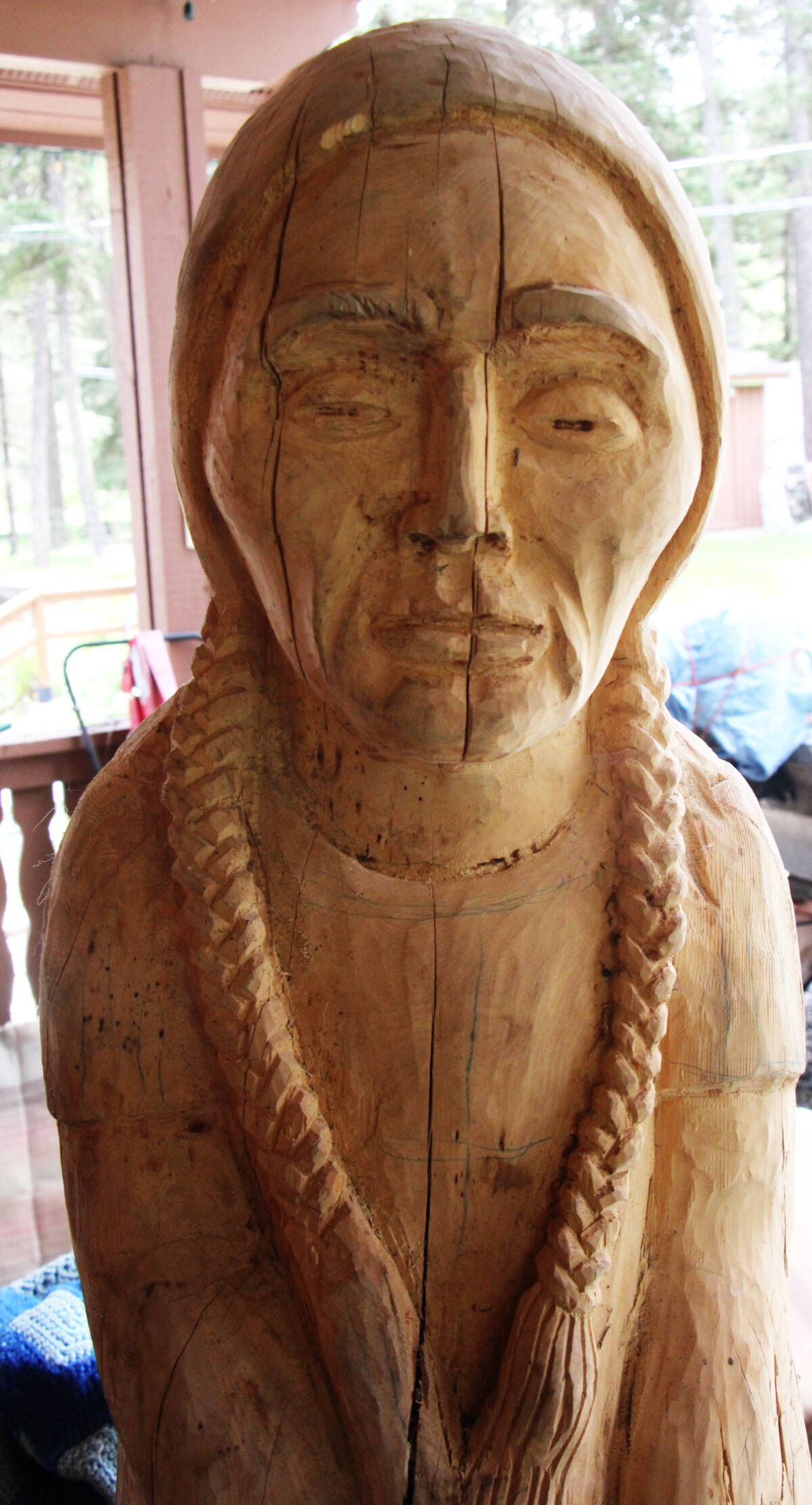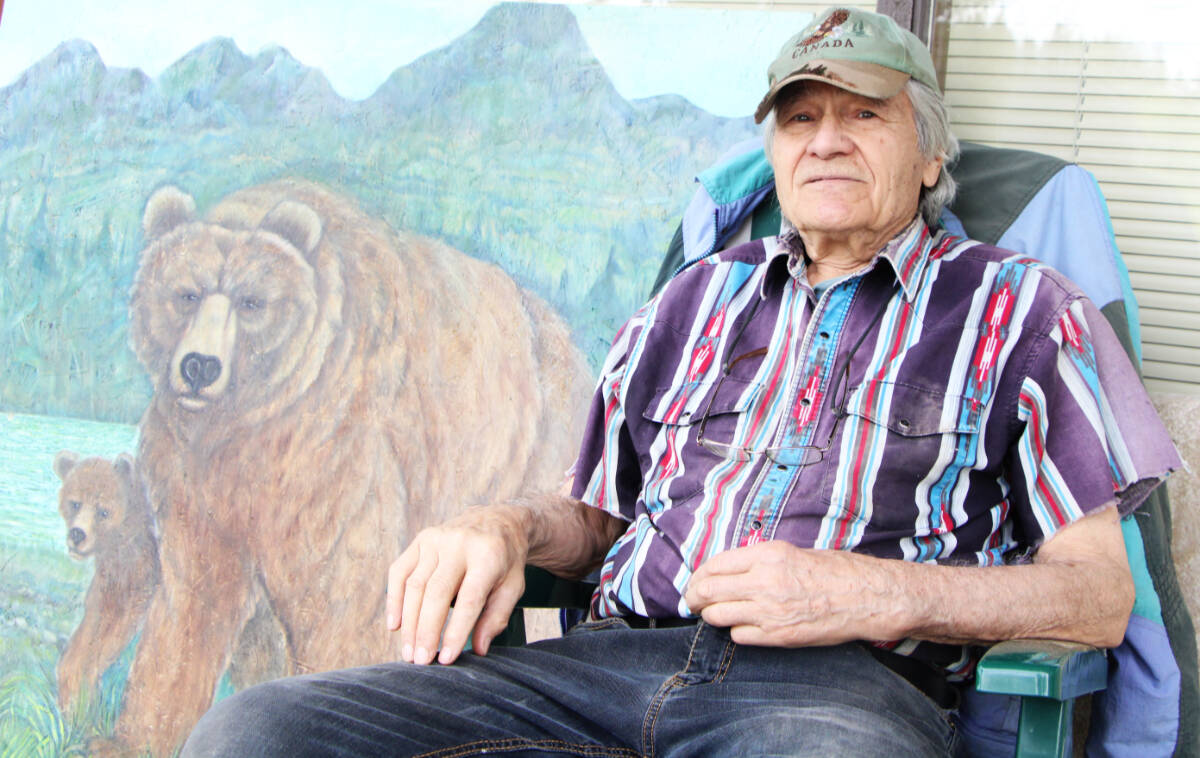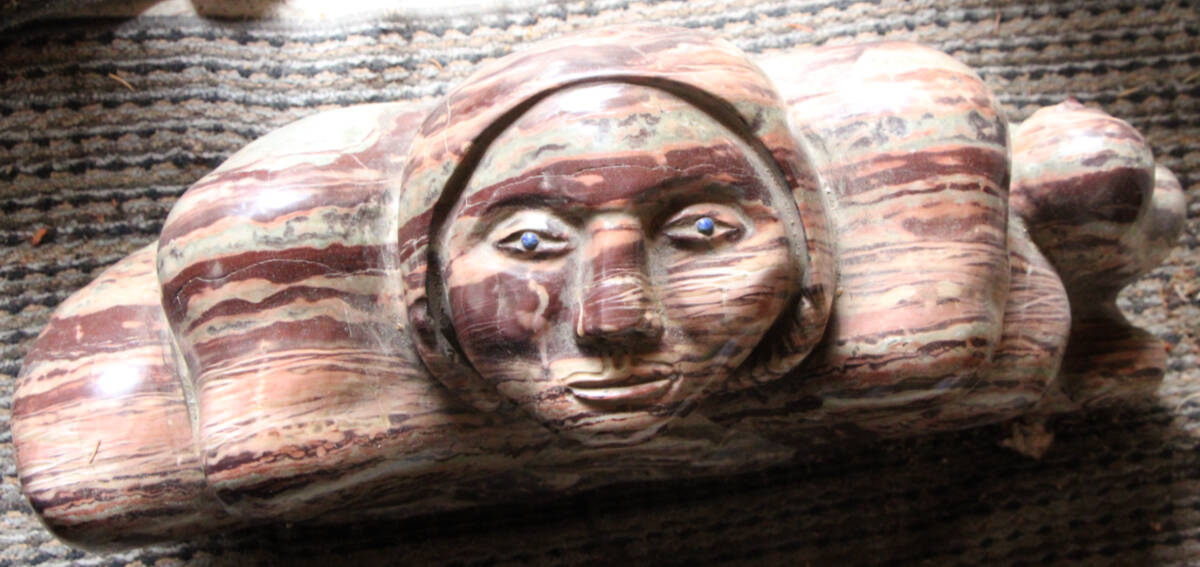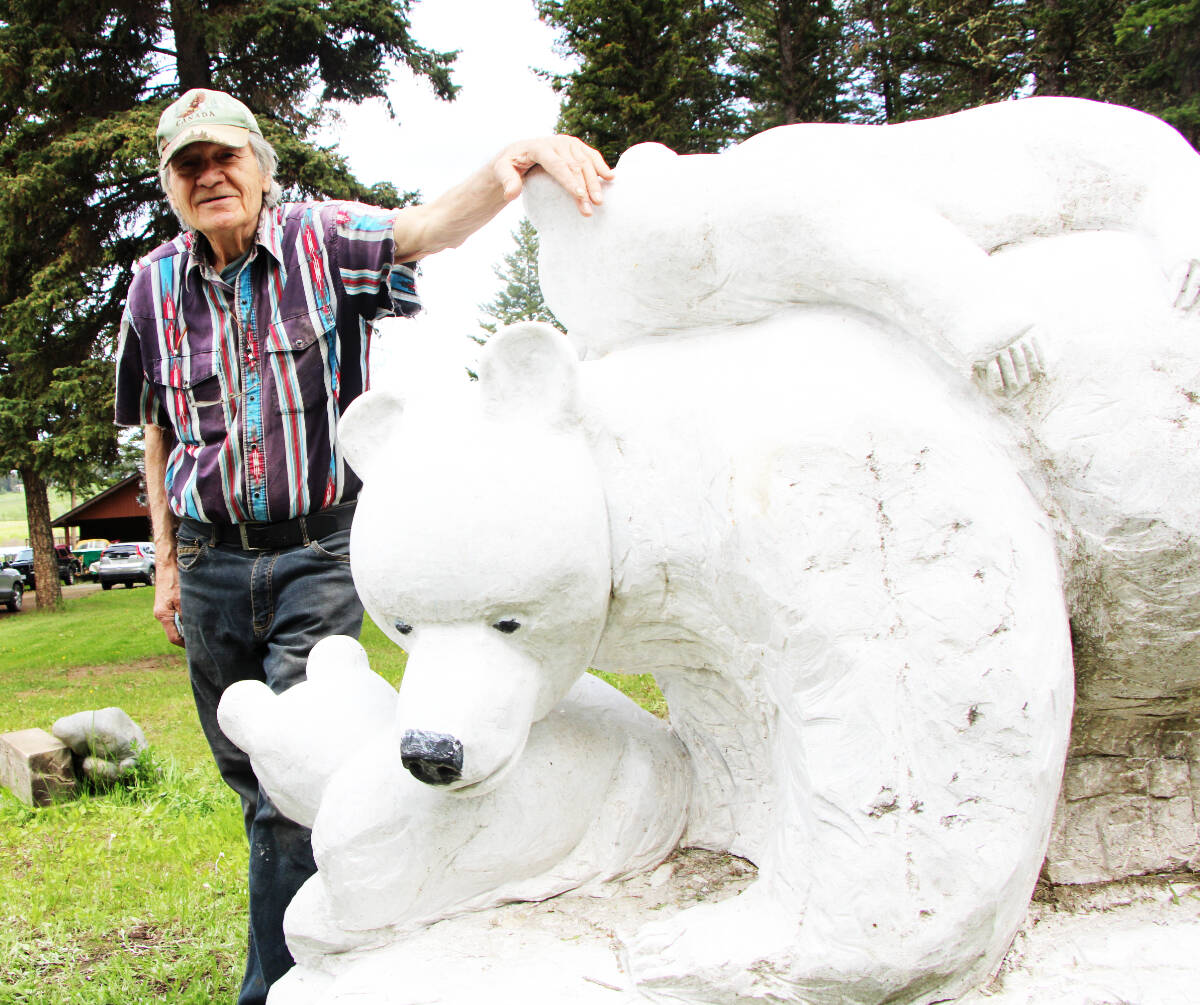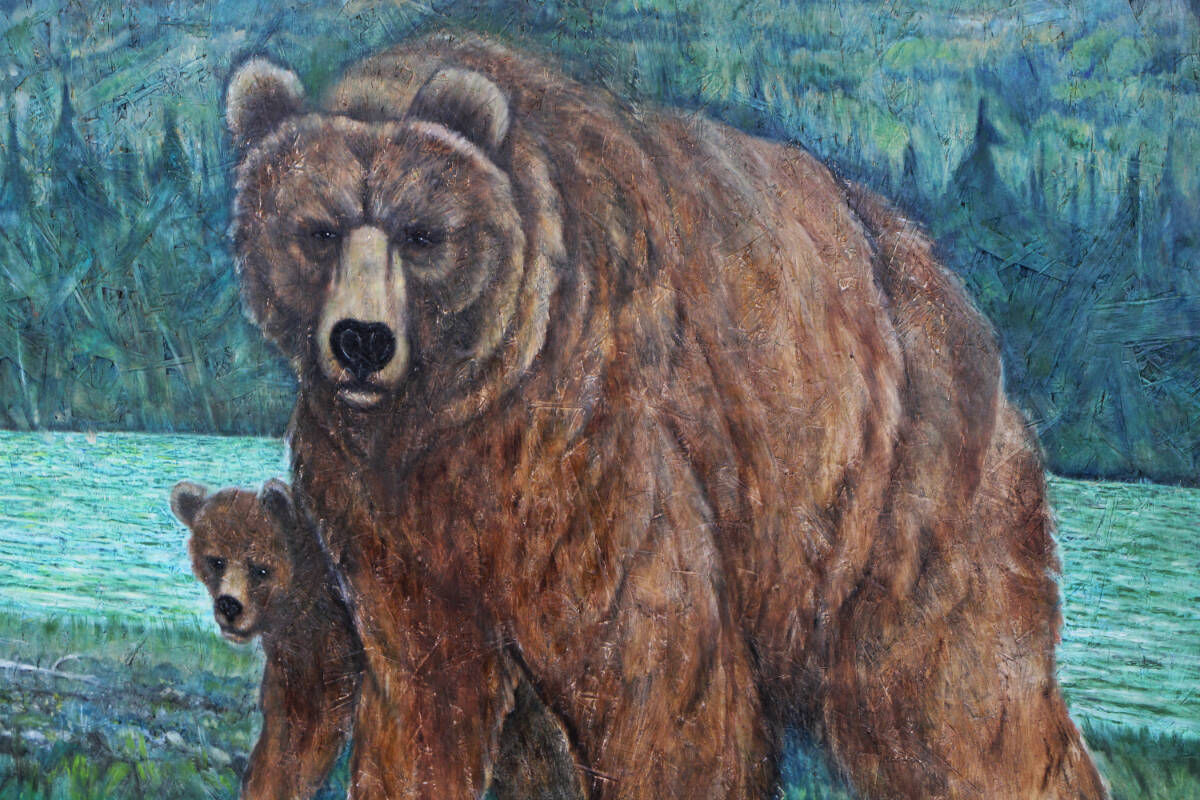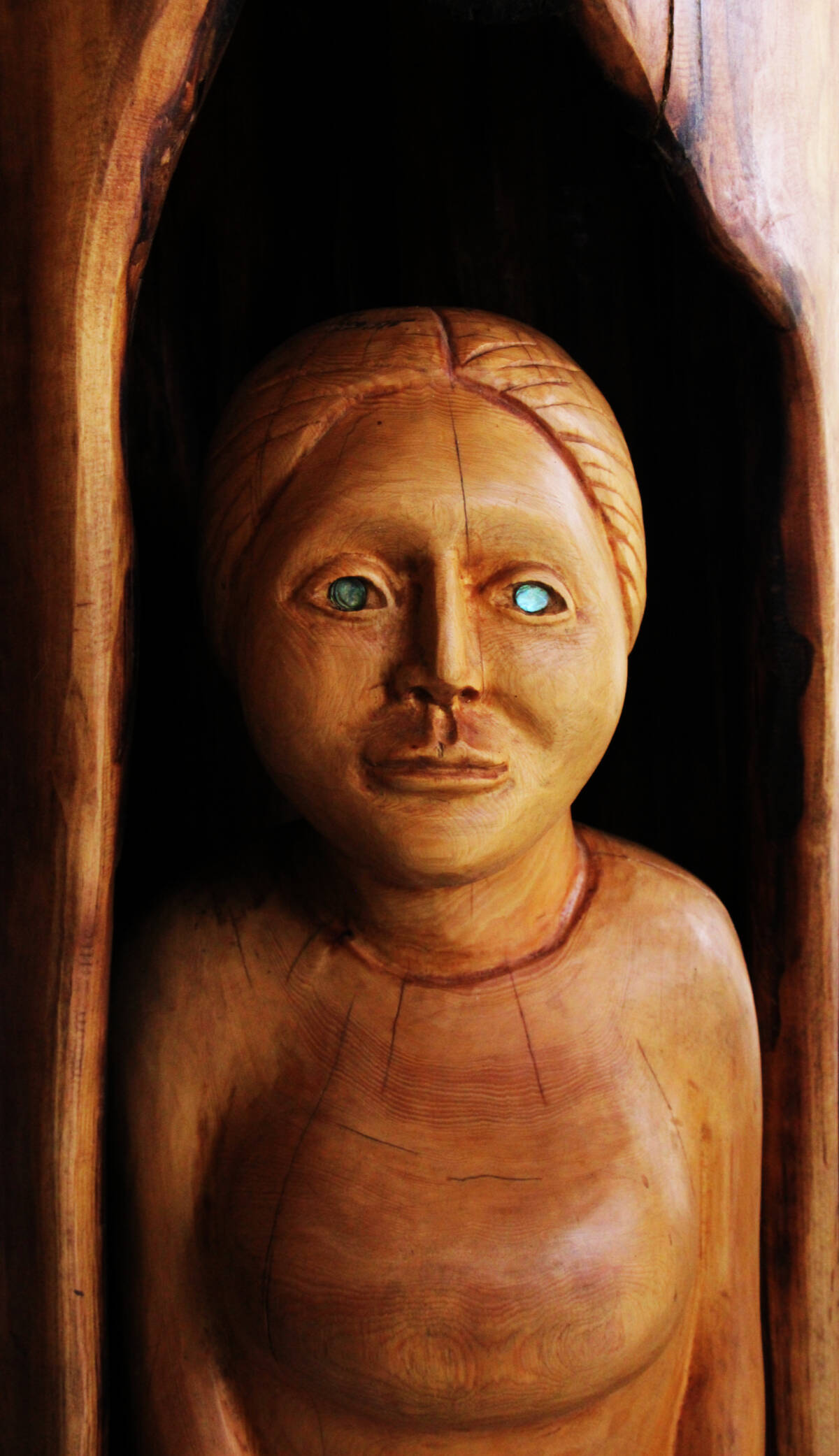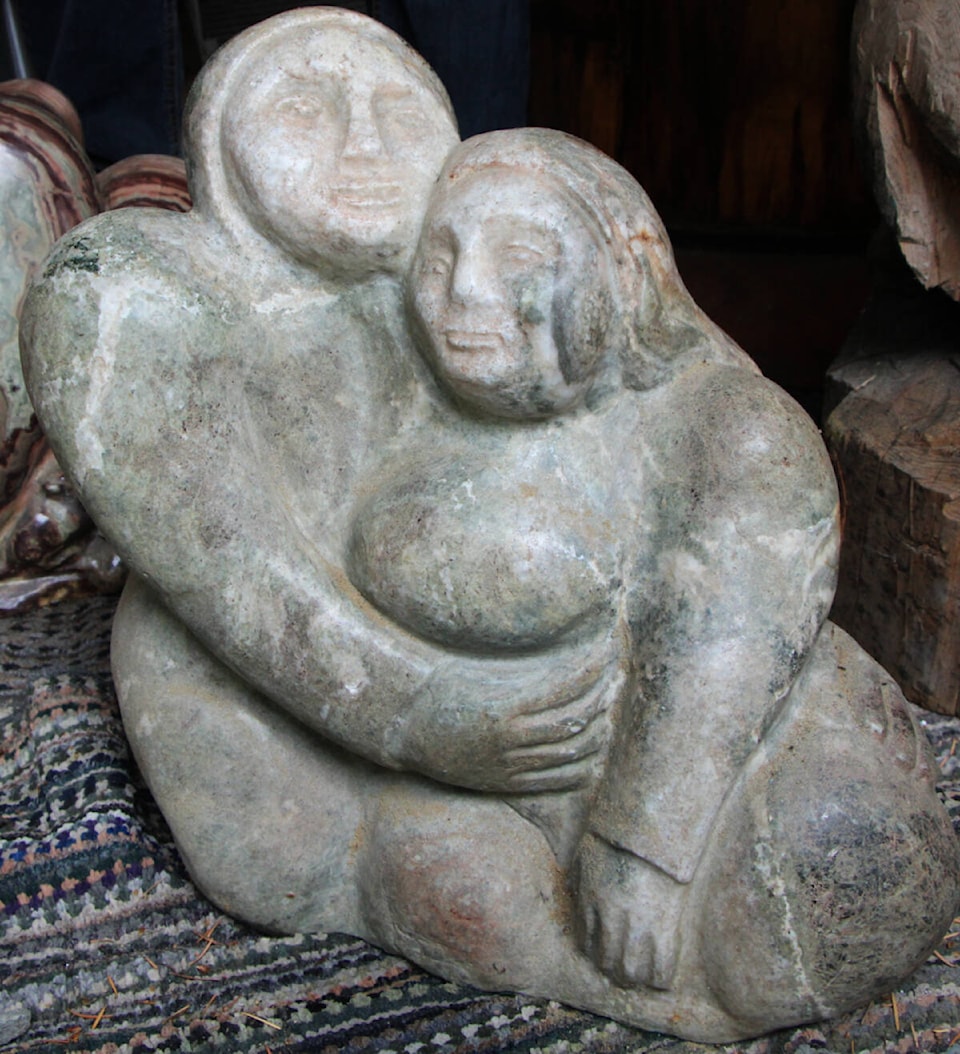Even after six decades, Graham Pettman’s love of carving remains as sharp as his chisels.
Pettman, a registered member of the Tallcree First Nation in Northern Alberta, loves carving reclaimed stone and wood into statues inspired by indigenous culture.
“Nature, family, growth, development it’s all part of my art,” said Pettman, 83. “I’m supposed to have wisdom but don’t tell anybody that I don’t have any.”
Pettman is just getting back into carving this year after relocating from Vancouver Island to 108 Mile Ranch due to health issues. He’s starting small, but intends to begin carving two five-ton marble statues he got from a marble mine in Enderby. One of the carvings will consist of several bears while the other will depict a woman riding a horse.
Pettman literally got his first taste for carving when he was seven at St. Augustine Residential School. One day he got his hands on a piece of bark and used his fingernails and teeth, emulating a beaver, to turn it into a tiny canoe. Throughout school, Pettman would often doodle in the margins of his notebooks during and after class.
After a brief stint in the military, he decided to study art at the Alberta College of Art and Design in Calgary. He left college after two years to gain some practical experience.
“I just got the two years because I figured the rest was practical and it certainly is.”
Pettman moved to B.C. in 1967 to work as a house painter and a general labourer. It was here his passion for carving was ignited after he saw the totem poles and the striking indigenous art of the Coast Salish people. Their artwork “blew his mind” and inspired him to get into carving.
He knew, however, he couldn’t just copy what they were doing and instead began to develop his own distinct style with the help of his departed brother Clifford, who introduced him to soapstone carving. Pettman perfected a multi-image style of carving that “was vertical, like the plains.”
“I got a lot of flak from the traditional west coast people when I showed up at shows. They’d say ‘those things got no relevance, they’re made up’ and yeah, I didn’t have the advantage of (being a part of a) culture with access to a bountiful sea and rainforest that had time to develop the art form as they did.”
Eventually, however, Pettman said he found acceptance for his art. He admitted that’s partially due to stubbornness and survival. Now he can sell just about any statue he completes, which he said is a great feeling.
Nature and indigenous family values remain constant sources of inspiration for Pettman. Mother Nature, he said, often provides him with the designs within the wood and stone itself as long as he looks and listens for them.
“Animals are the bread and butter, they keep you going and you can always sell them. When I get tired with that, I go into the native culture and use my Cree background and have fun with that,” Pettman said. “I can put all the designs of the animals and the people together, which is basically what the totems are about, amalgamating nature with stories and legends.”
READ MORE: 100 Mile sculptor’s work among art stolen in Kelowna
Pettman alternates between carving stone and timber to give himself a change of pace whenever he gets stuck on one or the other.
Carving wood is also easier on his ears - years of using power tools to shape alabaster, marble and granite have left him partially deaf.
During the winter, Pettman paints with acrylics and oil paints to bring his animals and visions of native culture to life. He said it’s a fun way to pass the time and a good way to avoid inhaling too much stone dust.
Pettman maintains he’s honoured to live on the land of the Secwepemc people and is hopeful his art will continue to promote First Nations culture.
“I grew up in an era where there was a lot of bigotry towards natives but it’s only through understanding and sharing knowledge we’ve dispensed with that,” Pettman said. “(People are) taught from the perspective of the supposed victors but that’s slowly changing and native culture is coming back. It feels great to have lived this long and see it now at the end of my trail.”
Anyone looking to contact him is invited to reach out via grahampettman@hotmail.com.
patrick.davies@100milefreepress.net
Like us on Facebook and follow us on Twitter/p>
